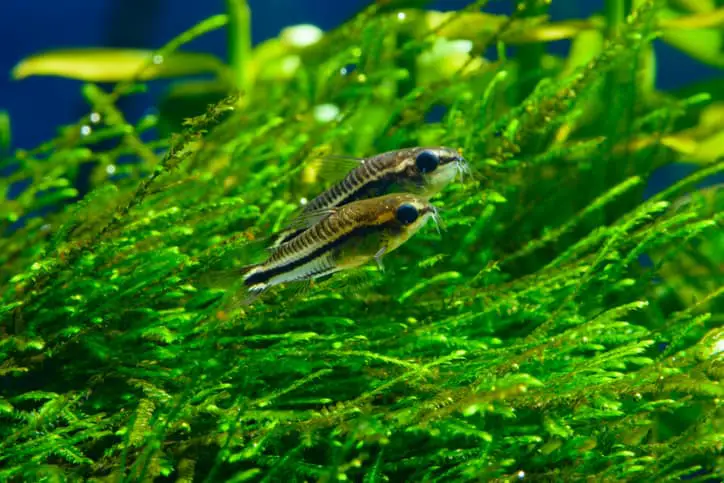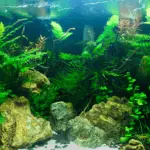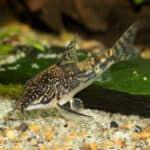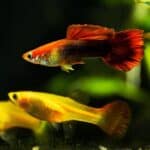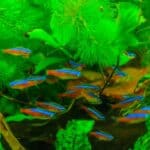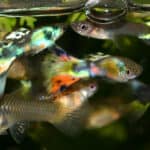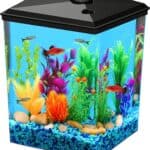Adding aquarium plant fertilizer in a planted tank can be a confusing thing to do for many beginners in this hobby. There are a lot of products to choose from but only a limited amount of information on the type of fertilizer you really need.
Our recommendation for aquarium plant fertilizer:
- Aquarium plant food
- Promotes healthy aquarium plants
- For freshwater tanks
- Item Package weight : 1.25 pounds
There are many things you need to consider when deciding which fertilizer type you need, or if you really need any. To make your plants grow healthy, your primary concerns should be the lighting and nutrient level inside of your tank. If you think that the plants inside your tank need a little bit more help in their growth, that is the time you will need a fertilizer. The first thing you need to consider before adding any amount of fertilizer is the amount of lighting your plants receive. Different tank systems would require different levels of fertilizer supplementation.
The next most important thing that your plant needs is CO2 or carbon dioxide. The level of CO2 that is needed by your aquatic plant is dependent on the intensity and amount of lighting you provide. Basically, low light to medium light tanks can get away with little to no CO2 injection. As you move into high light aquarium setup, you will need CO2 injection to maintain CO2 balance with the air.
We divide supplements into 2 main categories – micronutrients or trace elements and macronutrients. Here’s an overview:
Nitrogen is normally supplied through ammonia, nitrate and nitrite. These compounds are all found in all tanks with fish in them. Nitrogen is one of the first nutrients that you need to provide for your planted tank. It can be done with the use of liquid fertilizers like Seachem Nitrogen or a dry powder form.
The ideal level of Nitrogen for your plants is around 10 – 20 ppm. Nitrogen deficiency will have a negative effect on your plants. Yellowing of leaves in new plant growth is one of the signs of Nitrogen deficiency.
Phosphorus is one of the most important macronutrient for plant health. When put inside the tank, it is generally in the form of Phosphate (PO4). However, Phosphate has a harmful effect on aquatic life so maintaining your phosphate levels low is a top priority. Normally, this is the last macronutrient that you will need to supplement for as PO4 is found in many of food leftovers from the fish. The left overs are more than enough to provide nutrients for the plants.
Phosphorus dosing is recommended for high light setups. Low to medium light setups don’t really need much phosphorus since an excess of this will manifest itself as algae growth. Phosphorus is added through the form of liquid fertilizer like Seachem Phosphorus. It is also available in powder form as Monopotassium Phosphate. As I’ve said before, you want your phosphorus levels low at 1 – 2 ppm. If you have more sensitive plants, keeping it lower down to 0.5 ppm is also recommended.
Phosphorus deficiency, just like nitrogen deficiency, will show up as yellowing of the leaves in established plant growth.
Potassium is the final macronutrient on this list. It is not a harmful nutrient to aquatic life so there’s no harm in liberally dosing your tank with it. The desired level of potassium is around 10 – 20 ppm but because of its harmless nature, you can dose higher than that without issue. While you can test for potassium levels to make sure they are the right amount, it is just easier to dose more than enough amount to make sure you are covered.
It is available in liquid fertilizer form as Seachem Potassium or dry powder form of Potassium Sulfate. Potassium deficiency will be obvious as yellowing and forming of small holes at the edges of the leaves.
There are many organic and inorganic compounds and elements that are needed by aquatic plants to remain healthy and continue growth. These elements or compounds are needed but in far less concentration compared to macronutrients. We refer to them as micronutrients or trace elements. These include magnesium, copper, iron, manganese, molybdenum, zinc, cobalt, and more. These micronutrients can be added in liquid, dry powder or even tablet form. Seachem flourish tab is one of the best choices when dosing your planted tank with trace elements.
Dosing also comes up whenever we talk about nutrient supplementation. Basically, dosing is done to elevate the nutrient levels of your planted tank in the appropriate range. This section aims to discuss the most common dosing methods. To determine which dosing methods is ideal for your planted tank, further research is needed.
- Aquarium plant food
- Promotes healthy aquarium plants
- For freshwater tanks
- Item Package weight : 1.25 pounds
Estimative Index (EI) Dosing is a popular and a very easy dosing method. It is done by dosing out each individual macro along with a trace mix to a higher level every weekly water change. At the end of each week, 50% water change is done to cut the tank nutrients in half. After that, you dose again – this is a great way to keep all the nutrients in high level.
Target dosing is a method that requires you to test your water for elements such as Nitrate, Potassium, Phosphate, Iron or Calcium. You need to dose according to the levels of the trace elements inside your tank.
PPS (Perpetual Preservation System) Pro Dosing has become very popular in the planted tank hobby. It involves dosing the tank every day using each the tank’s 24-hour nutrient requirement. It is a great way to avoid excess nutrients since you are only supplying one day’s worth of nutrient. The downsides for this method is you have to dose every day and perform small measurements to ensure that you are putting in the ideal amount of nutrients. There are autodosers that you can use in case you want to automate dosing for your planted tank.
